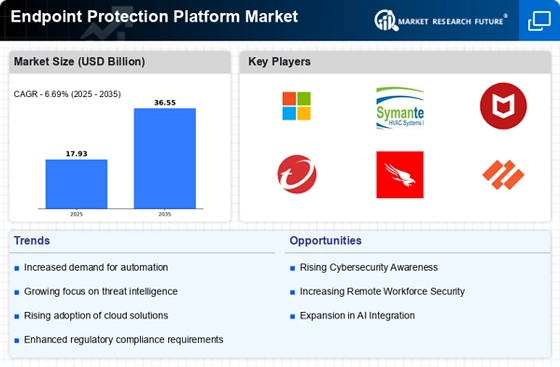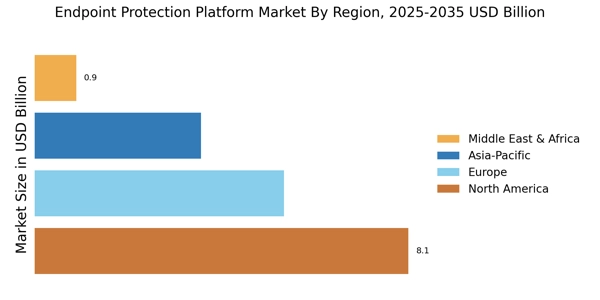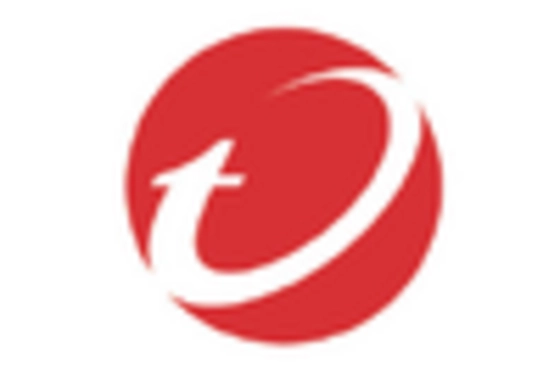Increasing Cyber Threat Landscape
The Endpoint Protection Platform Market is experiencing a surge in demand due to the escalating cyber threat landscape. Organizations are increasingly targeted by sophisticated cyber attacks, including ransomware and phishing schemes. According to recent data, the number of reported cyber incidents has risen dramatically, prompting businesses to invest in robust endpoint protection solutions. This trend indicates a growing recognition of the need for comprehensive security measures to safeguard sensitive data and maintain operational integrity. As cyber threats evolve, the Endpoint Protection Platform Market is likely to expand, driven by the necessity for advanced threat detection and response capabilities.
Remote Work and Mobile Device Usage
The shift towards remote work and the proliferation of mobile devices have significantly influenced the Endpoint Protection Platform Market. With employees accessing corporate networks from various locations and devices, the attack surface has broadened. Data suggests that organizations are increasingly adopting endpoint protection solutions to secure remote endpoints and ensure data privacy. This trend is expected to continue, as businesses recognize the importance of maintaining security protocols in a decentralized work environment. Consequently, the Endpoint Protection Platform Market is poised for growth, as companies seek to implement solutions that can effectively manage and protect diverse endpoints.
Growing Awareness of Cybersecurity Risks
There is a growing awareness of cybersecurity risks among organizations, which is significantly impacting the Endpoint Protection Platform Market. As high-profile data breaches and cyber incidents make headlines, businesses are becoming more proactive in addressing their security vulnerabilities. This heightened awareness is leading to increased investments in endpoint protection solutions, as organizations recognize the potential financial and reputational repercussions of inadequate security measures. The trend suggests that the Endpoint Protection Platform Market will continue to thrive, as companies prioritize cybersecurity initiatives and seek comprehensive solutions to mitigate risks.
Regulatory Compliance and Data Protection Laws
The Endpoint Protection Platform Market is also driven by the need for compliance with stringent data protection regulations. Laws such as the General Data Protection Regulation (GDPR) and the California Consumer Privacy Act (CCPA) mandate organizations to implement adequate security measures to protect personal data. Failure to comply can result in substantial fines and reputational damage. As a result, businesses are increasingly investing in endpoint protection solutions that not only enhance security but also ensure compliance with these regulations. This growing emphasis on regulatory adherence is likely to propel the Endpoint Protection Platform Market forward, as organizations prioritize data security and compliance.
Integration of Artificial Intelligence and Machine Learning
The integration of artificial intelligence (AI) and machine learning (ML) technologies into endpoint protection solutions is transforming the Endpoint Protection Platform Market. These advanced technologies enable real-time threat detection and automated response mechanisms, enhancing the overall effectiveness of security measures. Data indicates that organizations leveraging AI-driven solutions experience a reduction in response times to security incidents. As AI and ML continue to evolve, their adoption within endpoint protection platforms is expected to increase, driving innovation and efficiency in the market. This trend suggests a promising future for the Endpoint Protection Platform Market, as businesses seek to harness the power of AI to bolster their security posture.


















Leave a Comment